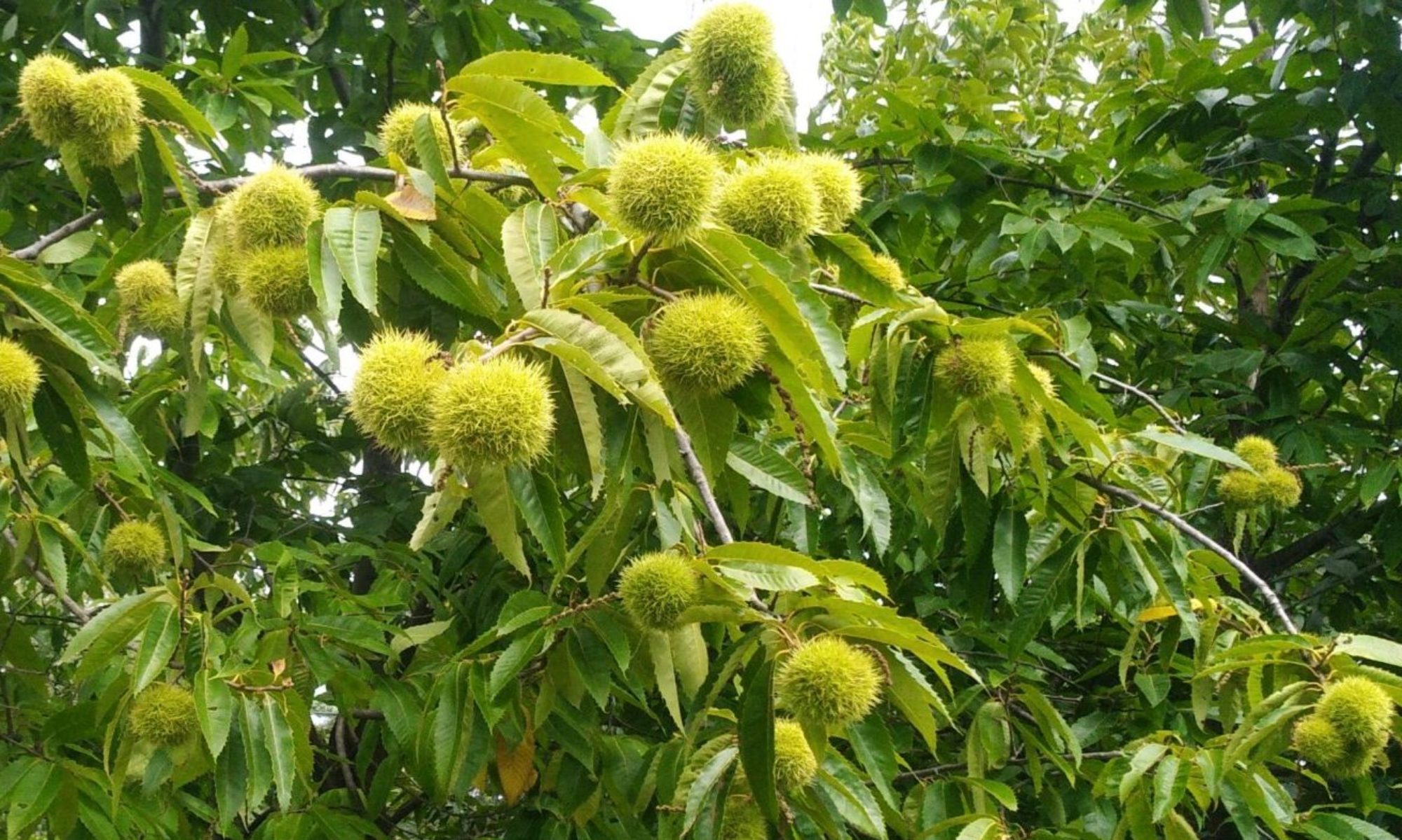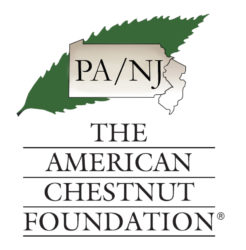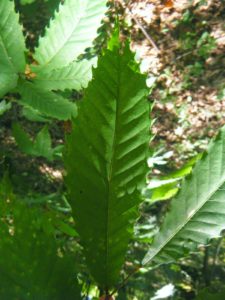Step one. Finding chestnut trees
The first step to making TACF’s breeding stock is to find American chestnuts with which to cross resistant Asiatic and advanced backcrossed pollen. To do this, TACF has what they call the “Tree Locator Program”. Trees throughout Pennsylvania and the rest of the American chestnuts native range are reported and identified by submitting a form and sample to our office. This process is covered here: report a tree
Most of the chestnuts that are planted around the US are Chinese or Japanese chestnut. About 90% of the time, trees that are reported to TACF and its Chapters are of Asiatic decent or are species other than chestnut (the horse chestnut, which is actually a buckeye, is the most common non-chestnut sample received). However, there are still millions of sprouts throughout its native range, mostly in forest areas (Figure below) and we do still discover some larger trees from time to time. It is a common misconception that the American chestnut tree is extinct. The American chestnut tree is not extinct or even technically endangered.
Map of FIA data from John Scrivani?
Caption: Through an analysis of Forest Inventory Analysis (FIA) data, VA Chapter volunteer and VA DOF employee John Scrivani found there to be an estimated 435 million American chestnut stems still in the forests of the United States.
For more information on the differences between the major chestnut species, and some lookalikes, please see this page: http://sfr.psu.edu/public/chestnut/breeding/identification
Step two. Controlled Pollination
Whenever a proper tree is found, great efforts are made to incorporate that tree into TACF’s national breeding program through the process of controlled pollination. Pollen from the male flower (catkin) of one tree is crossed with the female flower (bur) of another tree.
Picture of chestnut burs / pollination?
For more information on the specific steps toward completing controlled pollinations, please see the PSU Chestnut Growers website: http://sfr.psu.edu/public/chestnut/breeding/pollination
Step three. Planting and Growing
After harvest, chestnuts require a period of dormancy for approximately 1-3 months. Seeds are refrigerated until planting time. The seeds are typically planted in the ground and protected from rodents and deer using several methods, depending on the site and resources available. The trees are grown for 5-8 years until they are inoculated and selected for resistance and American character.
More information on planting and growing may be found on the PSU Chestnut Growers website: http://sfr.psu.edu/public/chestnut/breeding/planting
Step four. Inoculation and Selection
After growing for several years, trees that are part of TACFs research and breeding program are selected for traits of interest. Though other traits may come in to play depending on various research projects, in general, TACF is interested in two classes of traits: blight-resistance and American character*.
* Note that current selection methods are based primarily on “phenotype” or, the outward appearance of the tree. Tree breeders hope that the “phenotype” will correlate, or match, the “genotype”, or genetic makeup of the tree. To more closely match up with a “genotype”, many modern breeders will use marker-assisted selection.


